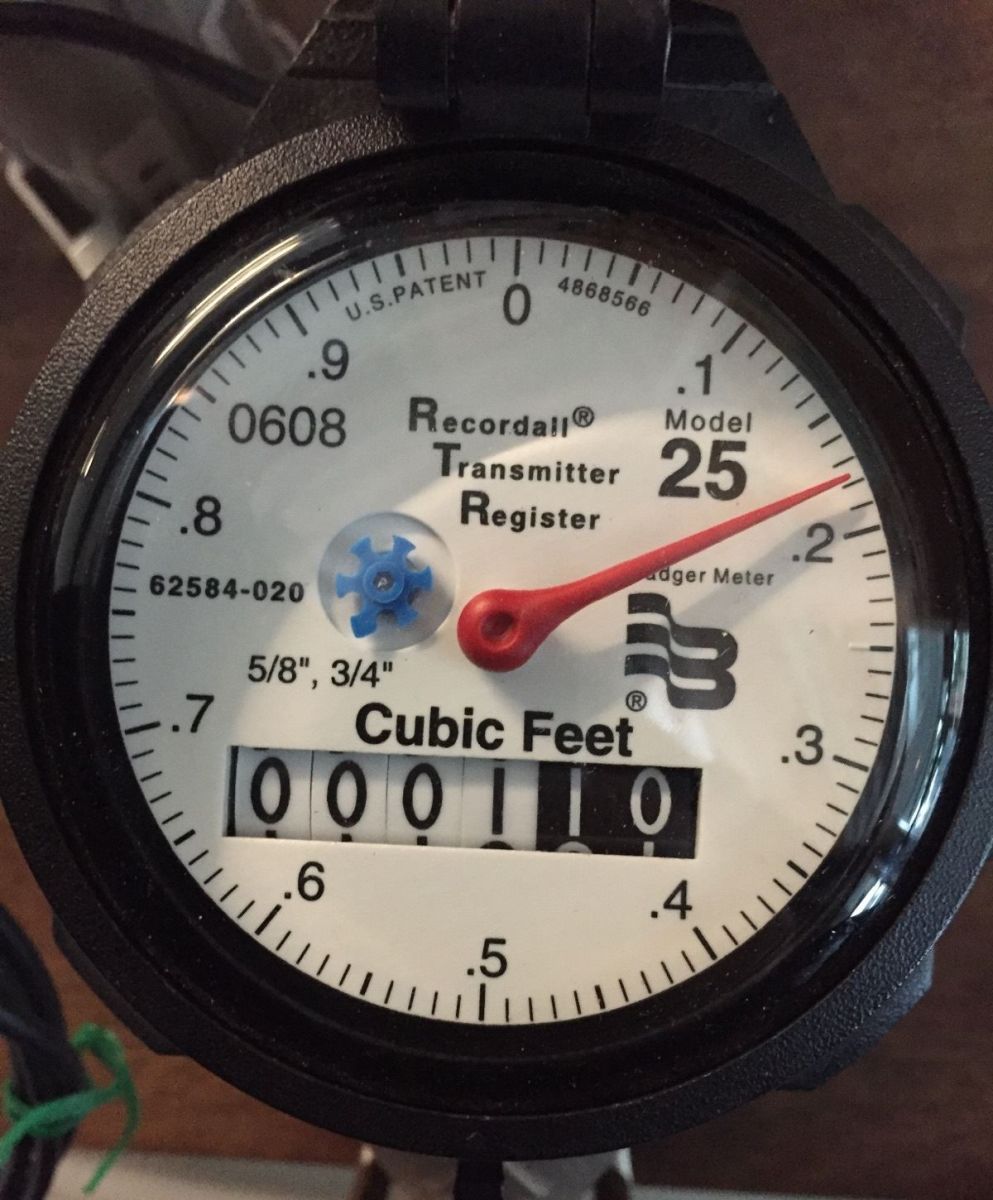STEP 1 Locate your meter box, generally found towards the front of a property, near the street. The box is typically in a direct line with the main outside faucet. It is housed in a concrete box usually marked "water". Remove the lid by using a tool such as a large screwdriver. Insert the tool into one of the holes and pry the lid off.
STEP 2 Reading your water meter is like reading the odometer of your car. Read all of the numbers from left to right that appear under the words “Cubic Feet.”
The first digit on the right represents one cubic foot. The second from the right represents 10 cubic feet. The third from the right (usually a different color) represents 100 cubic feet (one ccf) 748 gallons. One revolution of the meter sweep hand equals one cubic foot, or 7.48 gallons.
Locate the blue pin-wheel shaped low flow indicator to the left of the dial. If you see this moving when all of your water is turned off, you may have a leak.
Reading your meter yourself can help you monitor your water use, check for suspected leaks, or experiment with efficient landscape watering.
STEP 3 Keep in mind that you might be checking your meter on a date different from the one used for billing. This could result in a difference in the amount you find, compared with the amount on which your bill is based. However, if your reading is considerably higher than what is on your bill, check for a leak or try to determine the source of large water use. If your reading is significantly lower than the reading on your bill, please contact us and let us assist you in determining the problem.

 Water Meter
Water Meter